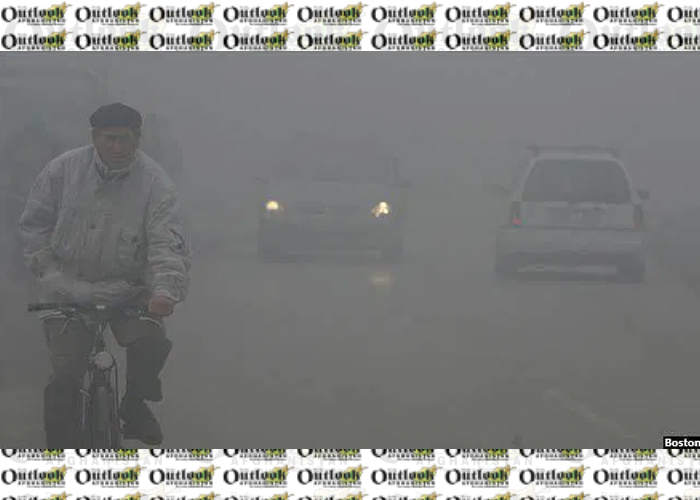Insecurity alone is not threatening the lives of the people in Afghanistan; there are many other issues as well that make the lives difficult for them. Among them environmental pollution is a dominant one, as it is taking quite a toll on the lives of the people. Afghanistan’s health ministry spokesperson, Masouma Jafari, while talking to Deutsche Presse-Agentur, disclosed that Afghanistan documented nearly 5,000 deaths attributed to air pollution. She also added that these deaths were due to respiratory and heart diseases that were considered to be caused by air pollution; while, around 10% of those killed by these diseases were in Kabul city. If these numbers are compared with the total number of civilian deaths because of violence, the results will be astonishing, as the number of such death is not more than 2,500 in 2020, which constitute half of the deaths caused by pollution. It clearly means that the authorities in Afghanistan are either not aware of the extent of the troubles caused by pollution or they are ignoring it altogether.
The issue of environmental pollution in Afghanistan is becoming ever more severe, owing to the increasing population in the urban areas. With each passing day, the air around us that supply us oxygen is getting more contaminated. The capital Kabul, in this regard, is one of the most affected cities. The air in Kabul has been declared hazardous by both national and international agencies. National Environmental Protection Agency (NEPA) has also declared that it the air in Kabul can cause eye and lung diseases and even cancer.
Kabul City is mainly marked by the flow of a congested traffic, comprising of different vehicle types. Majority of these vehicles do not go through any sort of performance test before becoming part of the traffic. Moreover, there is no high quality fuel used in these vehicles. The fuel most frequently does not come from the oil stations, but instead is supplied for the illegal fuel shops and small retailers where petrol and diesel are stored in water buckets and tanks by the suppliers. Thus, no check on the quality of fuel used in vehicles further complicates the matter.
Moreover Kabul City is a valley wherein very few contaminants could escape through the winter atmosphere due to thermal inversions that keep unhealthy gases such as oxides of Nitrogen and Sulphur trapped in the atmosphere. On the other hand, the arrangements to plant trees and preserve natural environment are insignificant. The city’s green areas are now extinct and they have been substituted by residential and commercial buildings. In fact, the green zones of the city have been sacrificed for the benefits of land mafia that wastes no opportunity in taking advantages of such invitations. At the same time, there is no arrangement to compensate for the deforestation that is taking place at alarming rate in and around the city.
Apart from air pollution, land and water pollution have become severe in the country as well, particularly, in urban areas. The urban schemes of drainage has not been adequately built properly or they are left with critical flaws.
There are no arrangements for the separate management of sewerage and drainage; therefore, the situation becomes uncontrollable when there is rainfall or small floods. Moreover, even in the capital Kabul, drains are not covered at all, and they have been turned into dustbins by the people. Without hesitation or shame, people through wrappers, plastic bags, papers and other waste items inside the drains. Most of the times the drains are blocked by unnecessary dirt; while, dirty water overflows and cover the roads. The same water mixed with soil then dries and rises as dust particles in the air which the passersby inhale. In addition, the ponds of dirty water are a haven of mosquitoes and flies, which are really dangerous for the spreading of severe epidemics. Meanwhile, the relevant city and state authorities appear to be negligent about all such issues.
Before it is too late, both Afghan citizens and the government should work together to resolve the problem of environmental pollution. The government bodies responsible for controlling the situation, like NEPA, have not been able to perform as much as they were expected to. Therefore, there must be a re-energized effort to make such organizations better equipped and more responsible to lead others. Meanwhile, the government authorities need to enact certain necessary compliance and regulations processes.
Regulation and compliance measures are essential for the transporters and the vehicle drivers, particularly, in relevance to the age of the vehicles, and quality of the fuel that they use. Severe measures should be put in place against the individuals who ignore to comply.
Meanwhile, the national and international environmental protection agencies need to conduct comprehensive awareness programs which should reach the inhabitants of the main cities, so that they know how their behavior deteriorate the environment and what sort of environmental challenges they pose to the country. They need to arrange seminars, ads, debates, lectures and other techniques, particularly in the urban regions for the sake of a comprehensive awareness campaign. In addition, preliminary education on environment should be included in the course of the students so that they are fully aware of their responsibilities towards their environment and ultimately towards their fellow human beings from the very beginning of their lives. Everybody needs to realize this fact that the ecosystem is a common natural resource and needs to be mutually preserved by all.
Home » Opinion » Pollution More Threatening Than Violence
Pollution More Threatening Than Violence
| Sajjad Aasim

